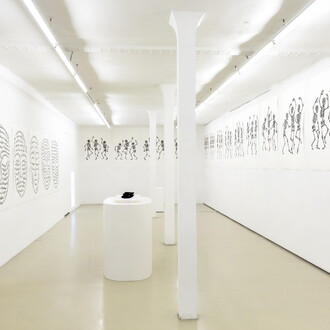The world of tomorrow will have been another present stakes out moments in the mumok Collection of classical modernism that resonate to the present day—beyond mere chronology and style histories, beyond supposedly linear narratives. Who, if not the artists from a collection of the twentieth and twenty-first centuries like that of mumok, no matter when they may have been active, would understand more about such a form of nonlinear thinking? A thinking backward and forward at the same time, a thinking in interwoven and intricately enmeshed particles and strands.
One that is aware of itself, of its art historiography, and is borne by doubt and criticism of conventional truth and knowledge regimes. Seen historically and from a contemporary perspective, the exhibition presents artistic practices as a blue-print for circular temporalities: as a budding potential, as an exercise in networked thinking, a sequence of events with an open beginning and end.
The world of tomorrow will have been another present features five large-scale installations. Five exhibitions in one exhibition, linked together by the participating artists’ shared interest in temporal matters. Nikita Kadan, Barbara Kapusta, Frida Orupabo, Lisl Ponger, and Anita Witek were invited to select works of classical modernism from the mumok Collection and enter into a dialogue with them. Departing from their own artworks, which are also among the museum’s acquisitions, and complemented by works that the artists have created or re-contextualized specifically for this occasion, these contemporaries not only form part of the history of the museum: by localizing themselves in art history, they participate in a discourse on contemporary art. Current artistic questions find their historical counterparts. Questions from a past now, from today’s perspective, posed to a future not yet perfect. Might this be the present?
















